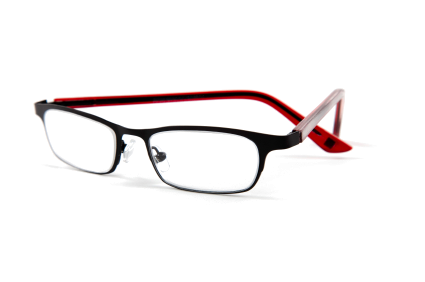Bifocals vs Multifocals – What’s The Difference?
Bifocals vs Multifocals: What’s The Difference?

At VAL-Uvision, we offer bifocal and multifocal glasses and contacts. Do you know what the difference is between them? Let us tell you, so you can make sure you have the right vision correction device for your needs.
What are Bifocals?
Bifocals are glasses or contact lenses that have two prescriptions in each lens that help people see objects both near and far.
People with conditions such as myopia (nearsightedness), hyperopia (farsightedness), astigmatism (all over blurry vision) and more commonly presbyopia (vision problems caused by aging) are typically prescribed bifocals or multifocals.
Bifocals have two different corrective lenses. The upper portion of the lens offers everyday vision correction, depending on your prescription. The lower portion of the lens compensates for reading difficulties. When you need to read something, just direct your eyes down to receive the right amount of visual aid.
Bifocals have a clear line that separates the distance and close-up zones, which some people dislike.
As with other contact lenses, bifocal contact lenses are available in both soft materials and rigid gas permeable materials. In fact, certain bifocal contact lenses are available in a disposable format allowing wearers the convenience of throwing the lenses out at specified intervals – even daily disposable bifocal contact lenses.
In general, there are three types of bifocal contact lenses: aspheric, concentric and translating:
- The aspheric contact lens functions much like bifocal eyeglasses where the powers are segmented between the top and the bottom of the contact lens. With a gradual change in lens power, this type of lens allows the wearer to see clearly at any distance.
- Concentric contact lenses contain two or more rings of power to correct the wearer’s vision – one in the center and an outer ring. Each ring contains a different power to compensate for both nearsightedness and farsightedness.
- Translating contact lenses are opposite of the aspheric contact lens in that the correction for near vision is on the bottom and far vision is on the top. In order to keep the contact lens from rotating when you blink as most contact lenses do, the bottom edge of the bifocal lens is usually flat.
History On Bifocals
Believe it or not, as early as the late 1700’s Benjamin Franklin created the first pair of bifocals in the form of eyeglasses and began a transformation in vision correction. Today, the development of bifocal contact lenses has revolutionized the correction of vision impairments more commonly associated with aging – not to mention made huge strides in the corrective eyewear fashion world.
What are Multifocals?
Multifocals offer more than one correction yet contain no telltale line. These glasses offer compensation for far away vision, intermediate distance vision, and close vision. Multifocals come in “progressives” style, which means that vision correction is gradual from top to bottom of the lens.
Multifocal lenses accommodate many vision changes that accompany getting older. If you are over 40, you are at risk for presbyopia, a condition in which you struggle to see/read things close by. Multifocal lenses can assist with your close vision, while allowing you to see objects near and far with ease.
What are the Different Types of Bifocal & Multifocal Contact Lenses?
Most people don’t know that contact lenses can be bifocal or multifocal, but like glasses, contact lenses come in multifocal and bifocal. Bifocal lenses means to have two prescriptions in the same lens. Bifocal lenses work well for presbyopia. Multifocal lenses have several different focusing powers in each lens, to accommodate different vision needs.
We are happy to offer multifocal and bifocal contact lenses in silicone hydrogel, soft lens, rigid gas permeable, and daily disposable types. If you would like to learn more about the difference between these types of contact lenses, the best thing to do is make an appointment for a contact lens fitting.
Contact our Jacksonville Optometrists Today
In general, if you’re finding that you need to hold menus, magazines and other reading material farther from your eyes in order to see them clearly it might be a good time to reach out to our eye doctor to see if you are a candidate for bifocal contact lenses.
To get fit for bifocal or multifocal glasses or contacts, please contact us today or an optometrist near you. Our eye doctors in Jacksonville can fit you for the right type of glasses or contacts. Call us now to make an appointment at the VAL-Uvision location of your choice.
VAL-Uvision now offers online contact lens ordering! Office visits to replenish your contact lens supply are now unnecessary. Simply click to order contacts online and have them delivered right to your front door! Do you need a contact lens fitting in one of our Jacksonville locations? Call us today to schedule a contact lens exam!
Leave a reply
